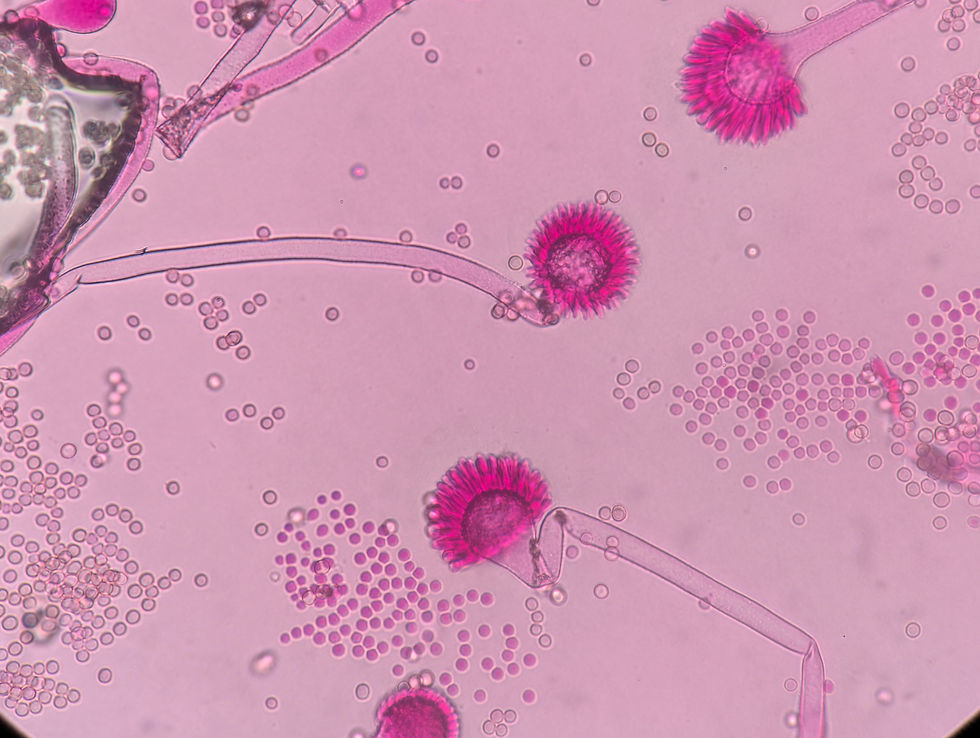Understanding Parasite Lifecycles: Why Series Treatments Are Key in Koi Ponds
- Tri-Star Koi
- 2 days ago
- 2 min read
By Tri-Star Koi
Parasites are some of the most persistent and challenging threats koi keepers face. To effectively combat them, it’s important to understand their lifecycles and why a single treatment often isn’t enough to eliminate the problem. At Tri-Star Koi, we want to help you grasp the science behind parasite control so you can keep your pond healthy and your koi thriving.
The Parasite Lifecycle: A Cycle of Survival
Parasites that infect koi don’t just appear out of nowhere—they follow specific lifecycles that allow them to reproduce, spread, and survive in the pond environment. These lifecycles usually involve several stages, including:
Egg Stage: Parasites lay eggs that often settle in the pond environment or attach to fish.
Larval/Nymph Stage: Eggs hatch into free-swimming larvae or nymphs that seek out koi hosts.
Adult Stage: Once attached, parasites mature, feed on the fish, reproduce, and lay new eggs—starting the cycle again.
Why One Treatment Isn’t Enough
Because parasites continuously reproduce and progress through these stages, a single treatment often only kills the parasites in one stage (usually the adults and sometimes juvenile on the fish). However, eggs or larvae hidden in the pond or on fish may survive.
If you stop treatment too soon, the surviving eggs or larvae will mature, reinfest your koi, and the parasite cycle will continue—leading to a recurring problem that can be harder to control.
The Importance of Series Treatments
To fully break the parasite lifecycle and protect your koi, treatments must be applied in a series—often spaced days or weeks apart—to target the parasite at every stage of its development:
First Treatment: Kills the adult parasites currently on the fish.
Subsequent Treatments: Target newly hatched larvae or parasites that were in the egg stage during the first treatment.
By repeating treatments, you ensure that all parasites, including those newly hatched after the initial medication, are eliminated before they can reproduce again.
How to Plan Series Treatments
Know Your Parasite: Different parasites have different lifecycles and require different treatment schedules.
Follow Medication Guidelines: Most parasite medications include recommended treatment intervals—stick to them strictly.
Monitor Water Conditions: Good water quality supports fish health and makes treatments more effective.
Maintain Consistent Treatments: Don’t skip or shorten treatment periods even if symptoms seem to improve quickly.
Quarantine New Fish: Prevent introducing parasites in the first place by quarantining all new arrivals for several weeks.
Why This Matters for Your Pond
Ignoring the lifecycle and treating only once can lead to:
Recurring parasite outbreaks
Increased stress and illness in your koi
Greater difficulty and cost in future treatments
Potential spread of parasites to other ponds or local waterways
Proper, series-based treatment protects your koi’s health, saves you time and money, and helps maintain a balanced, thriving pond ecosystem.
Understanding parasite lifecycles is the foundation of effective koi health management. Series treatments are essential because they disrupt the cycle, stopping parasites from reproducing and reinfesting your fish.
— Marlon @ Tri-Star Koi





